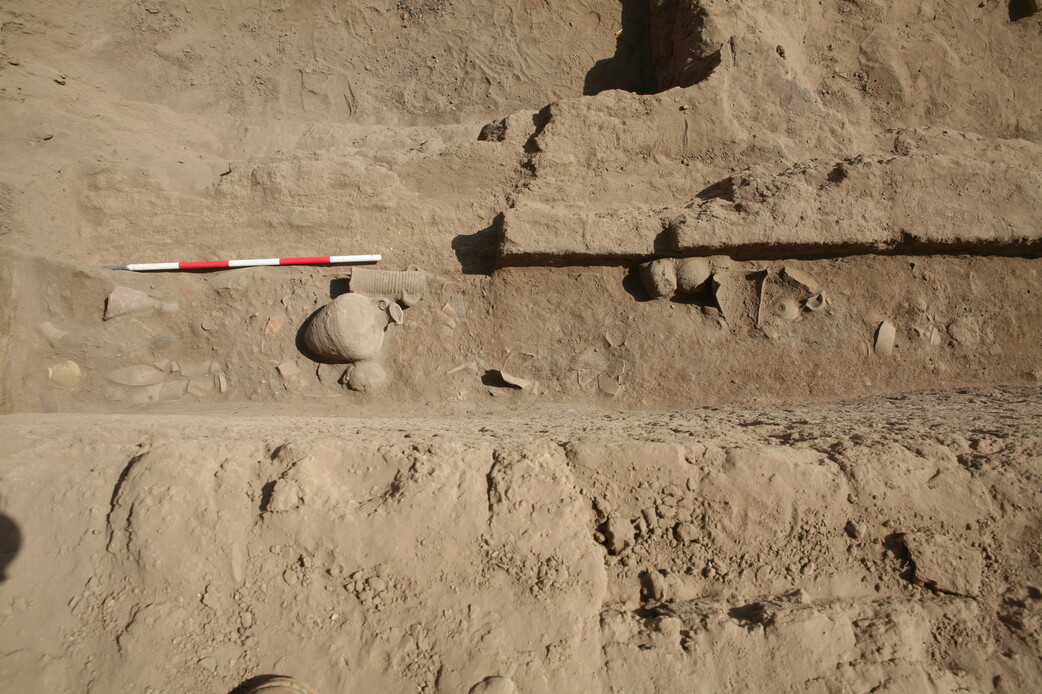Syene: Waste as a Source of Information: Archaeological Investigation of a Roman Waste Deposite in Syene, Upper Egypt
In Archaeology, the evidence of deliberately disposed waste is of particular importance, as valuable, sometimes unexpected, conclusions about ancient living conditions can be drawn from these findings.
In the course of excavations in the ancient urban area of Syene, modern Aswan, in 2012 revealed a finding between two houses that could be interpreted as waste disposal from the 1st century to the early 3rd century CE. This waste layer consisted mainly of sandy-loamy earth material mixed with various groups of materials and organic residues. The majority of the material disposed of is pottery, the evaluation of which is the focus of this project.
The waste layer from Syene represents a unique finding for Upper Egypt, which consistently allows references to be made to the present day. Waste management is not only an important, ubiquitous topic but is also increasingly finding its way into archaeology as a discipline in its own right (»archaeology of waste«). Due to the interdisciplinary evaluation of the finds, the project can also be considered a pioneer project for the region and leads to a significant expansion of the research horizon. The temporal limitation of this find complex also allows detailed studies, which will bring new insights in ceramological terms.
By evaluating the find material from the waste layer, the typochronology of the ceramic vessels from Syene that has already been worked out can be reviewed, supplemented, and made more precise. A detailed typochronology also makes it possible to determine changes in the range of shapes, making it possible to create a more precise statement about the duration of use of vessel shapes – i.e. their life span. In order to be able to draw holistic conclusions, finds of other materials – such as glass, as well as animal bones and botanical remains – are also included in the evaluation, whereby important conclusions regarding drinking and eating habits can be expected. With the help of the stratigraphic analysis, the type and taphonomy of waste disposal, as well as the composition and quantity of the waste, can be worked out. Thus, important information can be gained about the consumption and waste behavior of imperial house inhabitants of Syene.
Principal Investigator
Cooperation
Schweizerisches Institut für Ägyptische Bauforschung und Altertumskunde Kairo
Duration
06/2021–05/2023
Funding
APART-GSK Stipendium 11924


